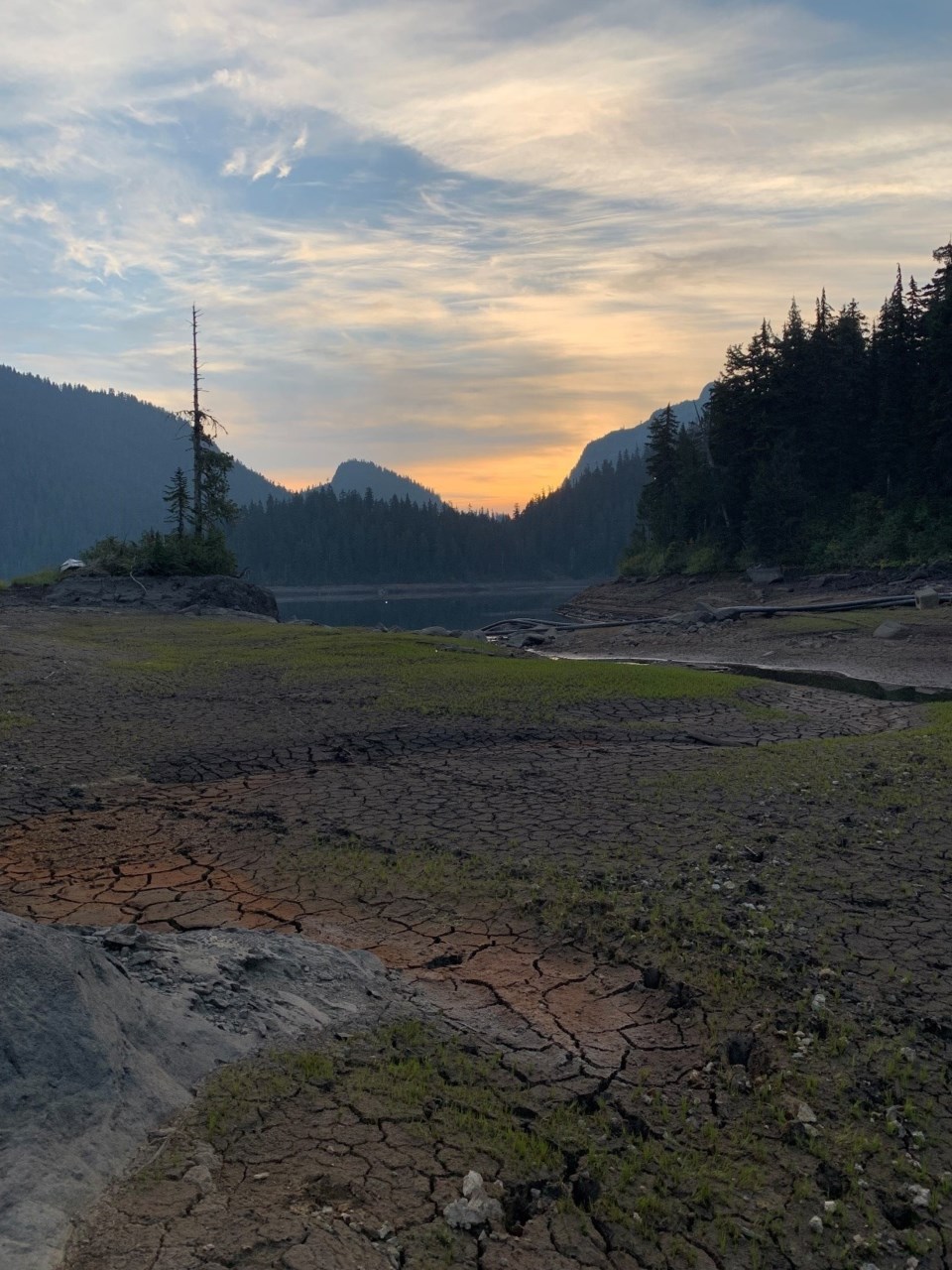Efforts to access more water from Chapman and Edwards Lakes to feed the Chapman water system has the support of local governments across the Coast.
shIshálh Nation chief hiwus Warren Paull and Town of Gibsons mayor Bill Beamish along with Sechelt mayor and Sunshine Coast Regional District (SCRD) chair Darnelda Siegers issued a statement Oct. 13 supporting the SCRD's Emergency Operations Centre's (EOC) plans to adjust siphons on the two lakes and reduce the amount of water released to support Chapman Creek’s aquatic ecosystem. Both initiatives require approvals from the province and the environmental flow need (EFN) reduction would also require federal government support. SCRD staff indicate that a reduction in this EFN from 200 litres per second to 160 litres per second would allow for more water to be available for community use and would further extend our water supply.
Local state of emergency possible.
The three leaders also indicated that a State of Local Emergency declaration may be considered should sufficient rains to replenish supplies in the system not be received. A staff report slated to be considered by the SCRD Board the afternoon of Oct. 13 states without those rains additional but unspecified measures will need to be in place by Oct. 25. It also requests additional the Board authorize and additional $200,000 for drought response expenses, bringing the total approved budget to $550,000. A portion of the money expeded may be abled to be recovered from the BC Disaster Financial Assistance program.
How much rain is needed
An EOC press release issued Oct. 12 stated "Given the current unprecedented low lake levels, over 150 mm of rain is required to recharge the Chapman Watershed and allow for a scale back on water use regulations."
The SCRD activated its EOC on Sept. 27 to manage resources in the drought impacting its Chapman water system, which supplies water to approximately 90 per cent of the population of the Sunshine Coast. Little to no rain has been received in the area for approximately 100 days and warmer-than-normal temperatures have been experienced from July through to October. SCRD staff reported that Chapman Lake, the system's primary water source, reached record low water levels on Sept. 21.
Expressing thanks and asking for vigilance
The joint statement reads "All local governments and the shIshálh Nation want to express our gratitude to the community for continuing to reduce your water use and further help secure supply. What is apparent from these past few months is the role that climate change is playing not just on the Sunshine Coast but in Regions around the Province.
"In response, as we look ahead to 2023, we will further diversify our water sources with the Church Road Well Field and in the future with the Langdale Well Field. Both of these water sources will supplement supply in the Chapman Water System. The water meter program will also be extended into Sechelt in early 2023 which will allow for identification of leaks and better community awareness of water use. A growth strategy for the Sunshine Coast is being worked on, so that we can ensure services are available for the future of our communities.
"We all understand that this is a difficult time for residents on the Sunshine Coast and we will continue to support the EOC as they work around the clock to secure our water supply into November. We encourage all residents and businesses to follow water regulations and to stay informed on water supply on the Sunshine Coast by following the SCRD on Facebook".
Stage 4 (severe) water use restrictions, including a ban on all outdoor water uses, came into force for the system on Aug. 31. In 2021, the system was placed on Stage 4 restrictions on Aug. 10 and remained at that level until mid-September. The system also saw Stage 4 restrictions in 2018, 2017 and 2015.



